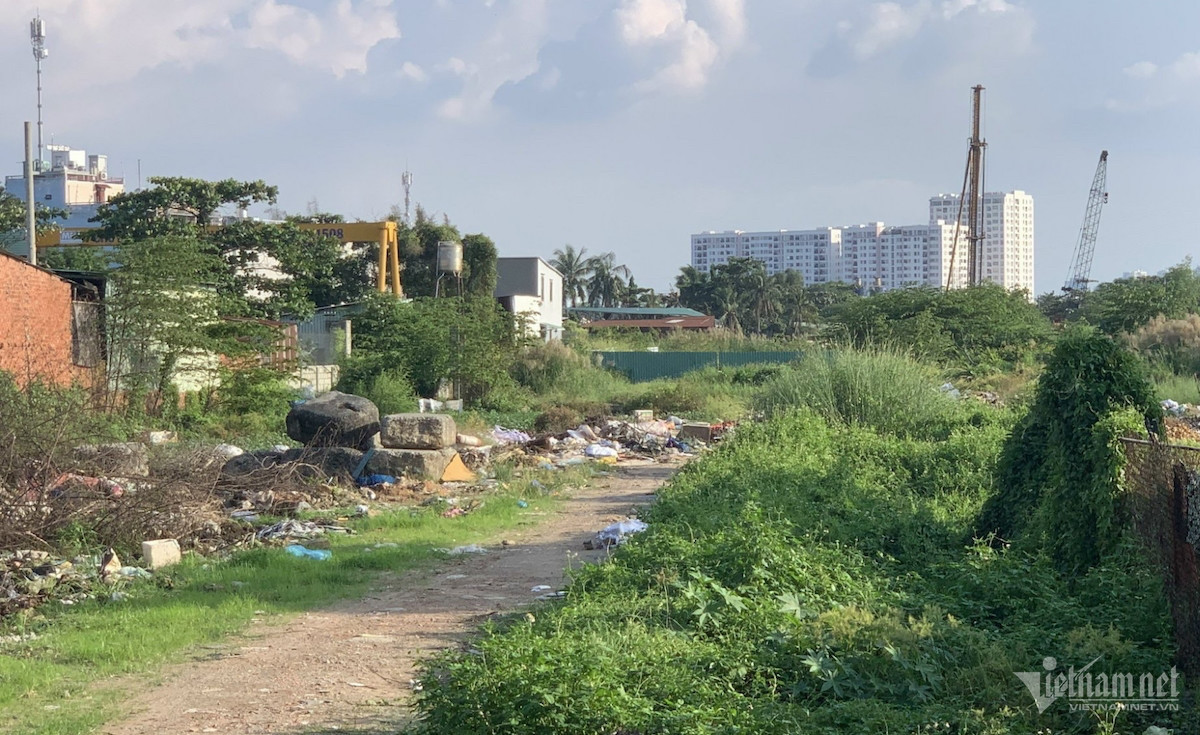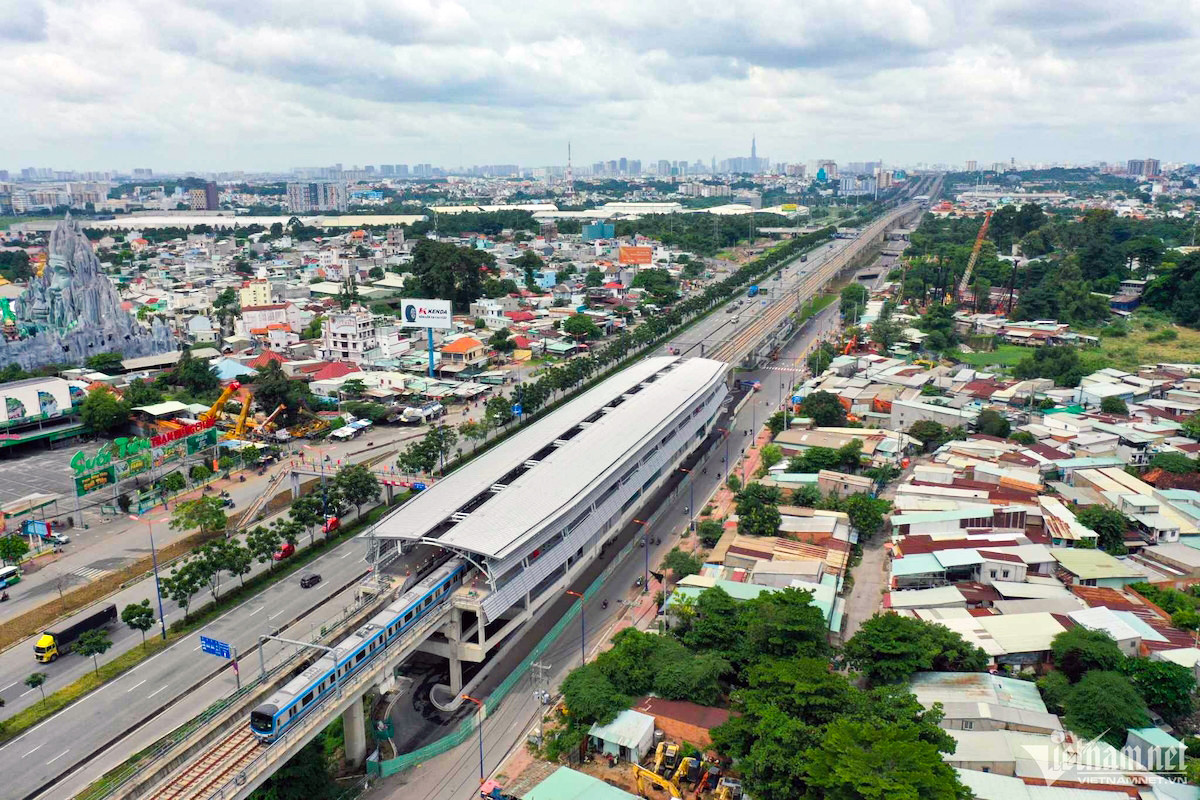With positive information from key transport infrastructure projects, many real estate projects in neighboring areas are speeding up construction and sales progress.
Bustling transactions, increasing selling prices

Planned 15 years ago, Ho Chi Minh City’s Ring Road 2 has a total length of 64km, but to date only 50km have been put into operation. Of the remaining 14km, about 6km pass through Thu Duc City, and construction is expected to begin at the end of this year.
The 6km Ring Road 2 is divided into 2 sections. Section 1 from Phu Huu Bridge to Vo Nguyen Giap Street (including Binh Thai Intersection), is 3.5km long. Section 2 from Binh Thai Intersection to the end of Pham Van Dong Street towards Go Dua Intersection.
Beltway 2 passing through Thu Duc City also has a 2.7km section from Pham Van Dong Street to Go Dua intersection which has started construction but is still unfinished. Together with existing traffic routes, the closed Beltway 2 is expected to open up more space for urban development in the East, creating regional connectivity.
The most important traffic route in Ho Chi Minh City, the Ben Thanh - Suoi Tien metro, has just postponed its commercial operation to the end of the year. Currently, this project has completed 98% of the construction volume but there are still some problems so the commercial operation time must be adjusted.
The fact that key traffic routes such as Ring Road 2 and Ben Thanh - Suoi Tien metro have decided on the time to connect and operate the entire route has become a driving force for the real estate market in neighboring areas.

The real estate market in the area surrounding Ring Road 2 is showing positive changes. Compared to the end of last year, real estate transactions are showing signs of being more active and prices are increasing.
For example, the real estate market in To Ngoc Van Street, Thu Duc City, is starting to "heat up". Frontage houses on this street are being offered for sale at prices ranging from 120-150 million VND/m2, houses and land in alleys from 80-100 million VND/m2, depending on location and area.
Mr. TM - a real estate broker in Thu Duc City area said that compared to last year, the real estate market in existing residential areas is now more bustling.
Not only real estate, the apartment market in the area near Ring Road 2 is also bustling again. Some projects are speeding up construction progress or opening the next phase for sale, such as King Crown Infinity or Fiato Uptown.
Transport infrastructure will help solve the housing problem.
The representative of the investor of an apartment project located next to the Ben Thanh - Suoi Tien metro line in Thu Duc City said that more than anyone else, home buyers in this project are looking forward to the day this traffic route is put into operation. Because not only will it be more convenient for real buyers to travel, but it will also increase the rental value.
According to this person, although the metro line's commercial operation time has been continuously delayed, the selling price of apartments in the project has never decreased. When it was launched for sale, a 1-bedroom apartment cost 5.5 billion VND/unit, but is currently being traded for nearly 6 billion.
In addition to urging the progress of key transport infrastructure projects, the Ho Chi Minh City People's Committee is accelerating the disbursement of public investment capital. This is a driving force to help the real estate market recover faster and existing projects adjacent to transport projects will benefit first.
According to Dr. Su Ngoc Khuong - Senior Director of Investment Consulting Services of Savills Vietnam, from the perspective of real estate development, the expansion of transport infrastructure projects will help increase the formation of urban areas, solving the housing problem for Ho Chi Minh City.
“People in real estate projects located on roads that can access these regional transport links will find it more convenient to live, study and work in densely populated areas like Ho Chi Minh City, especially for young people,” said Mr. Khuong.
Looking at the story of production, trade and logistics, experts from Savills Vietnam said that up to now, the connection between Ho Chi Minh City and the provinces in the Mekong Delta or the Southeast provinces has mainly relied on single roads, traditional national highways and is often overloaded.
“Thanks to future beltway projects, inter-regional freight transport will be more convenient, thereby attracting investors, leading to demand for leasing industrial park real estate such as data centers, cold storage, etc. and office rental demand. The combination of transport works will shorten time as well as save costs, thereby promoting freight transport from Vietnam to countries in the region,” Mr. Khuong analyzed.
TH (according to Vietnamnet)